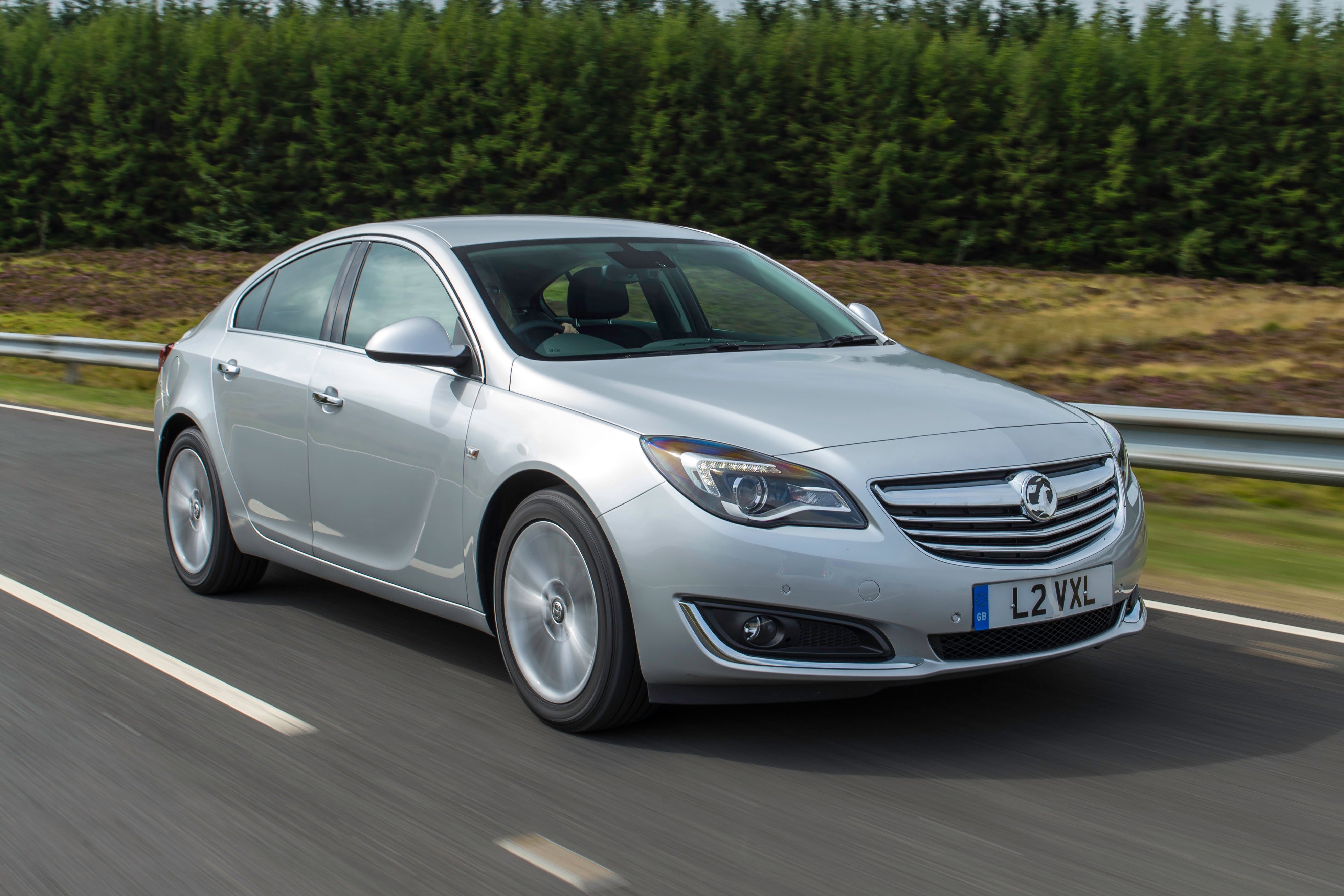Vauxhall Insignia (2008-2017) Review
Written by Andrew Brady
Quick overview
Pros
- Great value for money and lots around
- Hard-wearing and practical interior
- Excellent seats
Cons
- Quite boring
- Limited rear headroom
- Humdrum image
Overall verdict on the Vauxhall Insignia
"The Vauxhall Insignia wasn't a particularly exciting choice, and while you might've wished for an Audi A4 or BMW 3 Series, you would've paid a premium for those. Still, the Insignia was spacious and much better equipped."
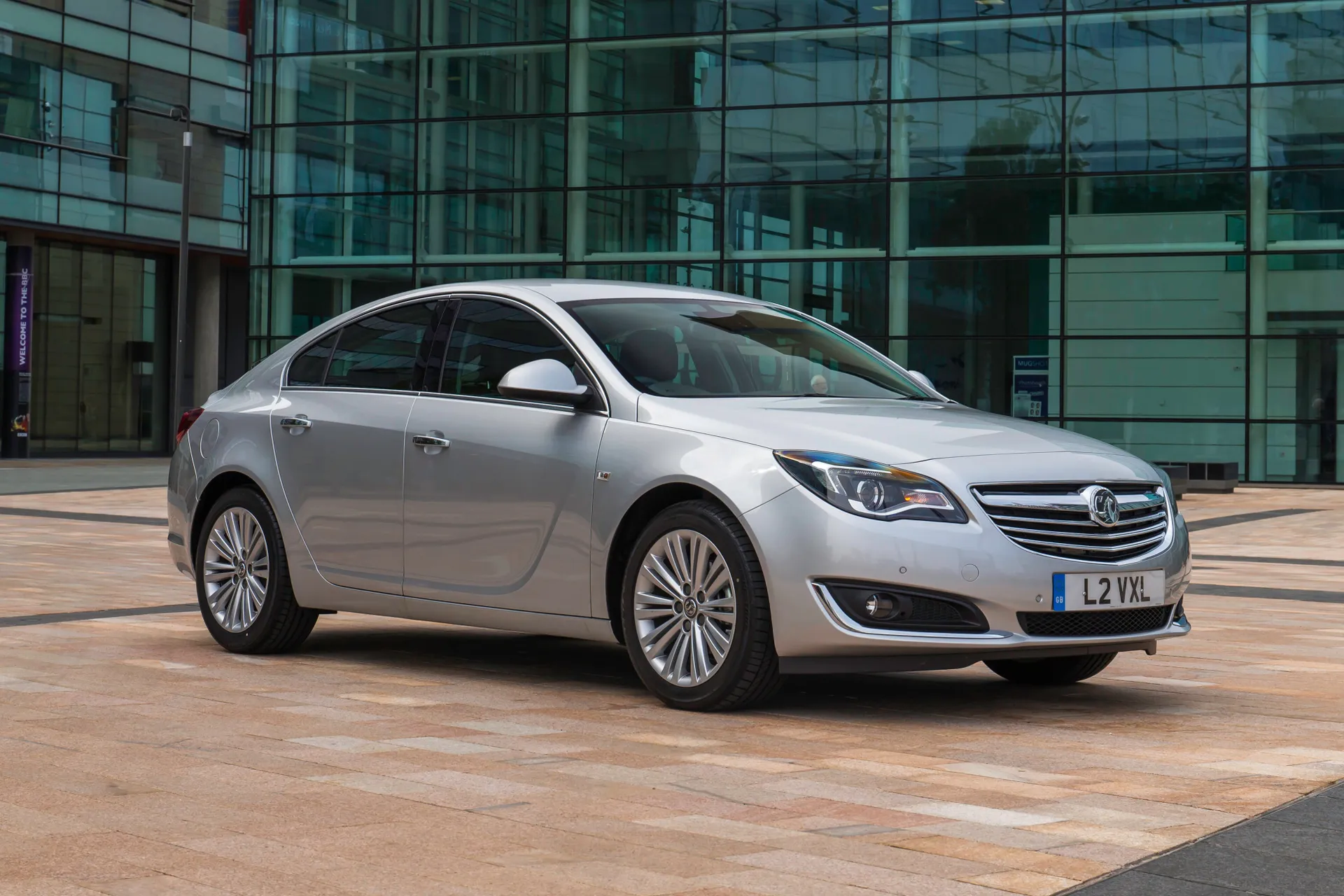
This type of car was a best-seller in the UK, but things changed, and volumes quickly became a fraction of what they were. The SUV was to blame, and the (literal) growth of cars such as the Vauxhall Astra: many found this large enough and didn't need the Insignia's girth. And, those who did probably opted for the Vauxhall Grandland X...
This car was sold to one core market: the company car sector. This had a knock-on-effect on how the range was configured: mainly diesel, which was low-emission and high-mpg focused.
It was a business car, if you will. There was no badge envy with the 2008-on Insignia, but those given one by their company would've discovered a very comfortable and practical place to spend the next three years and 90,000 miles of their working life.
These qualities transferred to the used car sector. In some ways, it's still a smarter second-hand buy than a more premium alternative, because of what you get for your money. Who needs to show off to the neighbours, anyway? These are well over a decade old, regardless of badge.
The latest generation of Insignia had plenty of premium credentials of its own. It offered a very grown-up drive, with a real feeling of integrity. It was a relaxing long-distance cruiser that offered a decent ride, brilliant seats and an effortless engine range. It was built to cover miles and provide comfort when new, and those qualities still shine through in second-hand examples.
The generous standard kit was welcome, and later models also featured a surprisingly contemporary infotainment system, which offered decent functionality despite the fast-paced electronic evolution. There were some powerful diesel and petrol engines within the range too – not to mention a fiery VXR V6 twin-turbo range-topper. They were a real rarity, but there are a few on the used car market.
The Insignia wasn't quite perfect at carrying out its core role in life. While the front seats were enormous, rear-seat space was compromised by a plunging roofline that restricted headroom. The boot was a good size, though, and the massive tailgate opened it up for all the world to see. Loading even the most cumbersome luggage into an Insignia was never tricky.
We rated the Vauxhall Insignia because it was well-built, and offered plenty for growing families. As prices edge closer to bargain basement level, now’s your time to grab one of the best.
Looking for a used car for sale? We've got 100s of Vauxhall Approved Used Cars for Sale for you to choose from, including a wide range of Vauxhall Insigna cars for sale.
Is the Vauxhall Insignia right for you?
Many family car buyers think they need an SUV, but they’d be better off saving a fortune and buying a second-hand Vauxhall Insignia instead. Its boot space remains particularly competitive, and is larger and more practical than many modern SUVs, even if their rear seats might offer more comfort.
Why have an Audi or BMW when this Germanic machine does what they do for far less? That the pretty shape still has a certain amount of elegance – it’s really ageing well – only bolsters our enthusiasm for the well-priced Vauxhall.
What's the best Vauxhall Insignia model/engine to choose?
We'd recommend one of the newer 2022 cars; these had new engines. The 1.4T is a good all-rounder for those who prefer petrol. If it's an older car you want, the 1.6 diesel is worth a look.
What other cars are similar to the Vauxhall Insignia?
The Vauxhall Insignia’s direct rival was the Ford Mondeo, but they were discontinued in 2022. The Volkswagen Passat has served for decades too, while other challengers included the Peugeot 508 and Citroen C5, the latter being superseded by the C5 X.
The Vauxhall Grandland could be considered the most modern equivalent, while newer rivals still include the Passat and 508. The latest BMW 5 Series is a premium alternative, and there's also the Skoda Octavia with its gigantic boot.
Comfort and design: Vauxhall Insignia interior
"The Vauxhall Insignia was a car designed around the driver – because the designers knew the driver would spend 95 percent of his or her time alone in it, most likely on a motorway. The design was quite appealing if you were new to the car, with a wraparound ‘Riva speedboat’ look to the dashboard, also favoured by similar-era cars such as the Jaguar XJ. Rich-looking trim inlays stretched from the dashboard to the doors."
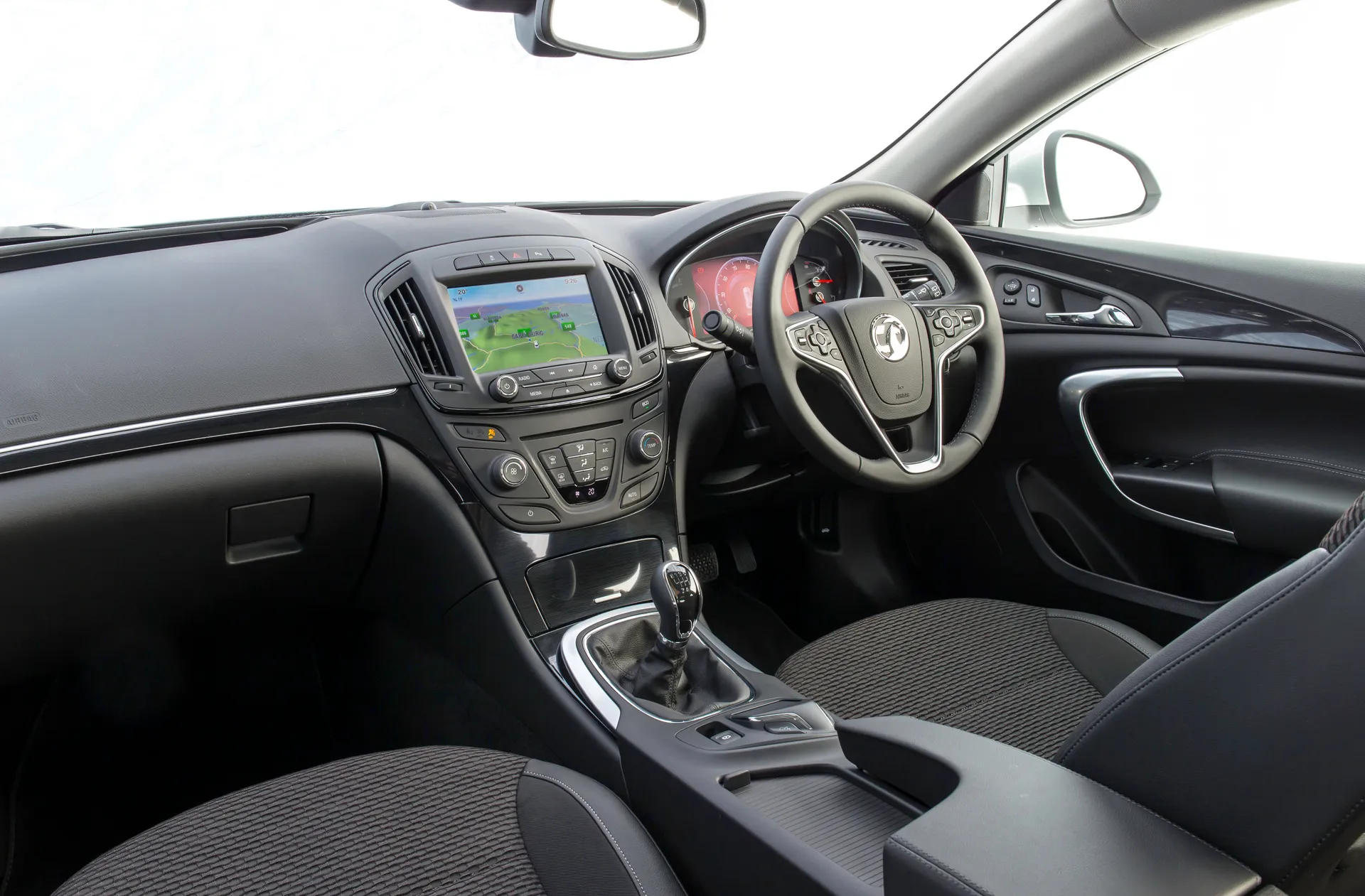
The dashboard still feels modern, thanks to the touchscreen's high-up location atop the centre console. It's dated by the fiddly buttons above and below, and the mass of extra buttons for the climate control system. Vauxhall tidied this up a bit with the 2013 facelift, but it remained cluttered. And there were even more buttons on the steering wheel, just for good measure.
Occupants bathed in red and white lighting at night and its instruments were clear. The objective, you sense, was to keep the load on the driver low, and make sure they weren’t driven to distraction.
The chairs were exceptionally supportive and well-sized, shaped for both small and large alike. An ergonomics body in Germany even awarded the Insignia a ‘top seat comfort’ prize, which was no mean feat.
We especially like the more bolstered seats the SRi models received, which gave that bit more support and adjustment. Vauxhall’s reputation for making some of the best seats in the automotive business was born from its large family cars – it was a top priority for businesspeople and the designers knew they had to excel here. The Insignia didn't disappoint.
Quality and finish
This was not a premium car so it didn't offer the BMW or Audi quality – or, saying that, even a Volkswagen Passat. That’s not to say this was poor, though. The plastics inside didn't have a luxury finish, but they were still robust and solidly constructed, and not too shiny or scratchy to the touch. As mentioned, the top half of the dash was surprisingly plush at first glance, and it was only when you ran your hands lower down that you noticed more unyielding materials.
Facelifted cars were a bit more elegantly finished than earlier models. Vauxhall used more rich-looking trim and cleared out (some of) the buttons from the dashboard. The infotainment screen was sharper and a new set of instruments looked more contemporary.
Insignias had good quality seat upholstery, with the multi-material choices in some versions being particularly appealing, especially as the seats themselves were so good to sit in.
Infotainment: Touchscreen, USB, sat-nav and stereo in the Vauxhall Insignia
There were a couple of generations of infotainment during this Insignia’s lifetime. Early cars used a colour screen, but it didn’t offer a great deal of functionality and didn’t easily pair with smartphones. After all, when it was new, smartphones had barely been invented.
The 2013 system was a big step. It was based around an eight-inch touchscreen with a crisper display and much simpler, more intuitive graphics. This system was easier to use and more comprehensive.
Insignias with the Navi 900 IntelliLink system featured Apple CarPlay and Android Auto as standard. This super-useful smartphone connectivity tool was, however, optional on the more basic R700 Touch system.
Top-spec facelifted Insignias had a part-electronic instrument panel that packed more functionality to a colour screen ahead of the driver. It was another premium-style feature that we liked, and think is worth searching out in a used car.
Space and practicality: What is the Vauxhall Insignia like to drive?
Front-seat space was superb. The Insignia had a staggering range of adjustments for its driver’s seat. It slid so far back on the runners that even those who thought they were tall would barely be able to touch the pedals. The steering wheel adjusted for height and reach, and there was a good amount of seat height adjustment, too. It meant everyone could find a perfect driving position – another example of how the Insignia prioritised the driver.
The only slight black mark was that it wasn't easy to judge where its extremities were. This was a very large car and the interior seemed designed so you couldn't quite get a sense of where its corners were.
The rear seat was, like the chairs up front, very comfortable. It was firm and supportive, with lots of under-thigh padding for business people stuck in the back from Slough to Glasgow. Legroom was decent, too. Headroom was the issue – even sub-six-footers would've found their head pressed against the roof when they leaned back, which was a disappointment for a car this large (the Insignia measured more than 4.8 metres long and over 1.8 metres wide).
Oddly, boot space was average, despite measuring 500 litres with the seats up. It was a very long space, but there was far too much intrusion from the wheel arches, plus a big, awkwardly-shaped step in the floor as it met the rear seat-backs. The opening was vast, though, creating an almost walk-in space, and there was (just about) enough width at the rear of the boot to accommodate a set of golf clubs mounted sideways.
The seats split 60:40, and folding them opened up 1,470 litres of space. This was a large amount, although that slightly awkward shape meant you may not have made full use. The 2017-on Insignia was much better in this regard.
Isofix mounts for child car seats were fitted to the outer rear seats as standard, and the wide cabin made them easy to use.
Handling and ride quality: What is the Vauxhall Insignia like to drive?
"The Vauxhall Insignia was, dynamically, a car that could easily justify a premium badge. It was not a driver’s car like a BMW, but it had the inbuilt integrity to rival something like an Audi or Mercedes-Benz. This robust and solid machine felt safe and secure from behind the wheel.
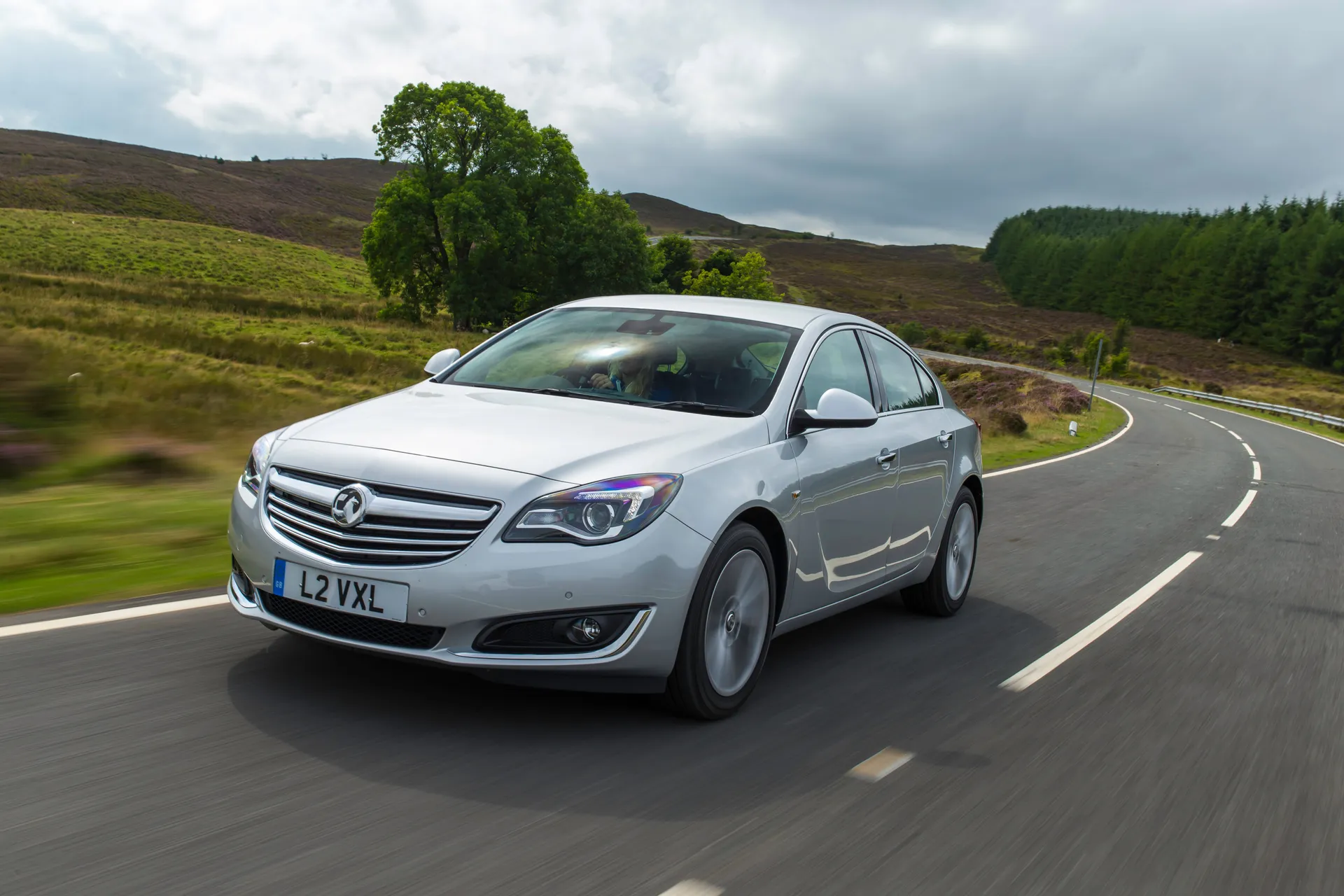
Pre-facelift cars were, admittedly, a bit lumpy, and didn’t quite have the smooth-riding refinement of later models. But we’re concentrating on post-facelift examples here.
The Insignia was at its best on the motorway. Ride quality was exceptionally stable and absorbent, with a really planted and secure feel that gave the driver confidence to deal with anything that may have unfolded. The suspension was quiet, never crashing into expansion joints, and remained flat and even without becoming jarring or uncomfortable. Even on larger wheels, it was very good. It felt suitably over-engineered to cope with most things a city centre could throw at it, too.
Handling was effortless. The steering was precise and well-connected, without feeling nervous. There was a sense of ample grip and the Insignia steered through corners with a flat and composed feel. It was by no means engaging or invigorating – again, a BMW did that job for you – but had a straightforward, low-stress feel that helped the driver thread it from one end of the Welsh countryside to the other without fatigue.
What engines and gearboxes are available in the Vauxhall Insignia?
The engine lineup was tremendous, which we’ll attempt to simplify by concentrating on the mainstays. The range opened with a 1.8-litre non-turbo, which is still best avoided. It was gutless to boot. The 1.4-litre turbo was and still is a better choice. It was a smaller more powerful, and more fuel-efficient unit.
Petrol Insignias are fairly rare though. Most were sold with a diesel engine, of which the 2.0-litre CDTi was the most popular This was sold in a multitude of power outputs from 120PS right up to a 195PS Bi-Turbo (and a rare all-wheel-drive version for better winter traction), but the 130PS and 163PS motors were commonplace.
This wasn't a particularly smooth-running engine, with a gravelly nature, but it settled down brilliantly on motorways to an extremely refined and (that word again) effortless cruise. It responded strongly to the accelerator and was, overall, a strong albeit workmanlike engine.
If you travel more at mixed speeds, the rattles of the 2.0-litre engine, especially an older one, might grate. The 1.6 CDTi is a better bet. This engine produced 136PS and wasn't the fastest against the clock, but it was less droney and smoother.
The auto ’box wasn't great, but it did the job. Rather like the six-speed manual, in fact, which was far from memorable but wasn't excessively awkward or obstructive to use.
Refinement and noise levels
On the motorway, in facelift guise, the Insignia was excellent. Noise levels were very low, and the wind whistle was kept at bay. All engines faded into the background and the Insignia did a very convincing impression of a Mercedes-Benz.
It was a pity the engines weren't a bit quieter, particularly the 2.0-litre diesel, which spoiled the car’s in-town refinement. The larger diesel felt old fashioned, the 1.6 offered less vibration and low-resonance rumble – although even this was far from the ‘whisper-quiet’ motor promised by Vauxhall’s advertising.
The Insignia in post-facelift guise was sold with some particularly large alloy wheel options and it’s worth noting these generated a bit of tyre roar at speed, particularly if the car was running cheaper rubber.
Safety equipment: How safe is the Vauxhall Insignia?
It was way back in 2009 that Euro NCAP crash-tested this generation of Insignia. The results shouldn’t be compared to more modern cars, as the tests have undergone a decade of (more stringent) evolution since then, but it’s still fairly reassuring that the car scored 94% for adult occupant protection and 79% for child occupant protection. Safety assist was pretty good at 71%, although pedestrian protection was a woeful 40% even then. We dread to think what the score would be if it were tested to today’s standard.
Front and side airbags were fitted to all Insignias, along with side head airbags which stretched from front to rear, although the seatbelt reminders only covered those in the front.
Isofix was only for the rear seats too, and there was no passenger airbag cut-off switch, nor any knee airbags. At least electronic stability control was fitted to every Insignia of this era.
As standard, the car came with a tyre repair kit, but new car buyers could choose the option of a proper spare wheel – a full-size one at that.
MPG and fuel costs: What does a Vauxhall Insignia cost to run?
"Low emissions are a by-product of good fuel economy. And company car drivers love them as it means less tax to pay."
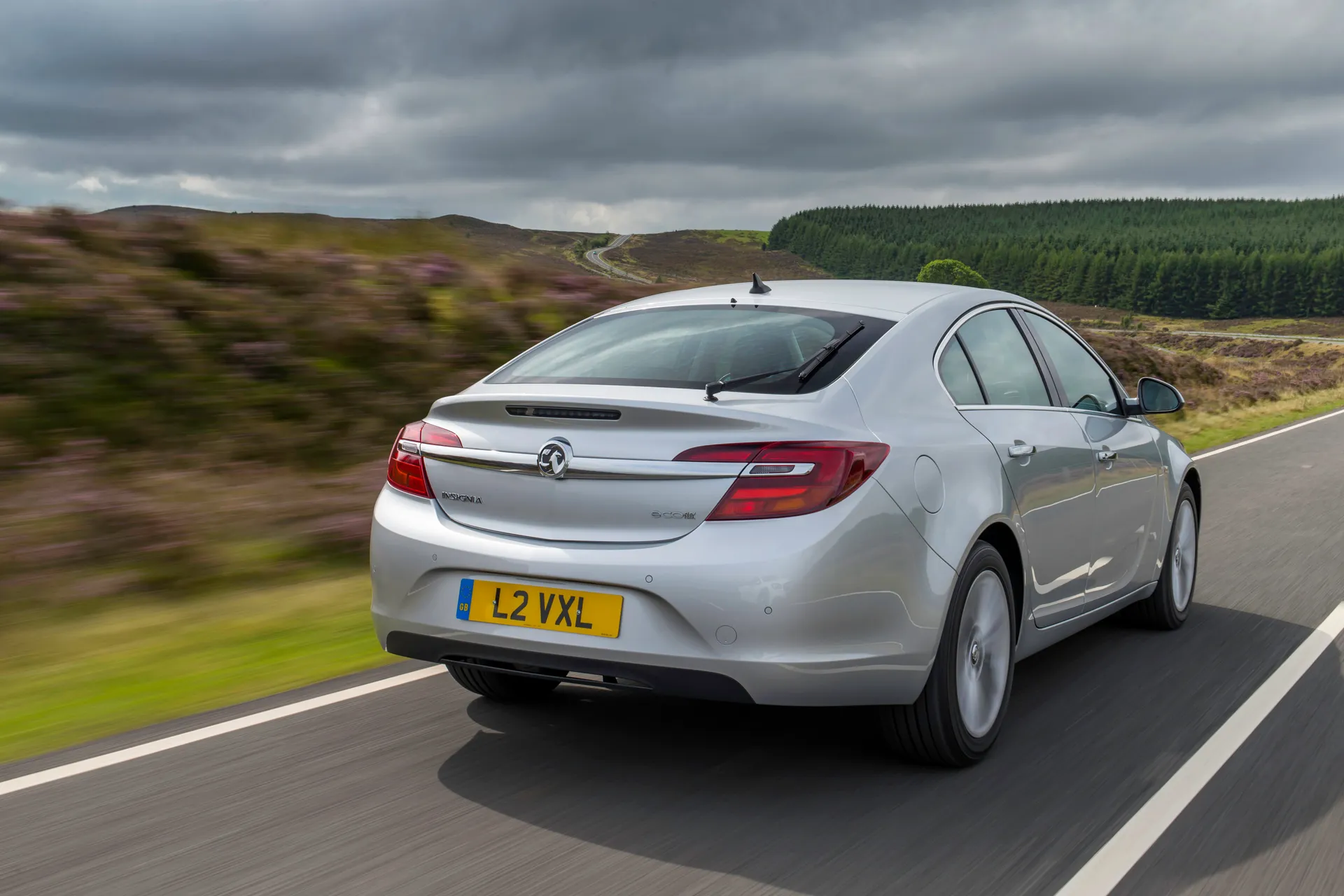
The Insignia was thus dominated by some impressively fuel-efficient motors, particularly the diesels. Many 2.0-litre CDTI versions averaged over 65mpg, with some lower-power versions edging over 75mpg.
This was, of course, according to the more lenient, and older, NEDC fuel economy test, so is unlikely to be replicated in modern daily driving. But it did show how efficient the diesels could be. The 1.6-litre CDTi was good, too – and underlined why the 1.8-litre petrol was best avoided: less than 39mpg was awful. This equated to little more than 30mpg in everyday use.
You can spot Insignias with standard engine stop-start by the ‘Ecoflex’ branding they wear.
Vauxhall Insignia reliability and warranty
Over time, the Insignia was reported to have various issues. These included oil leaks, a failing wiring loom and interior switches, dodgy stereos, noisy rear brakes, faulty gearshift cables, a noisy transmission and dual-mass flywheel issues, the latter being a costly repair.
Most of these issues should be resolved, but it's worth checking when buying used.
Vauxhall Insignia insurance groups and costs
The range is massive, so it's best to look at the insurance group relating to your used buy. For now, we'll look at the cheapest and most expensive.
The cheapest car is group 14, but this is the dreaded 1.8 VVT we spoke of earlier. The newer 1.4T cars start one group up. 2.0 CDTi cars start at group 16 and span to 26. The VXR-engined 2.8T Elite tops the charts at group 38.
VED car tax: What is the annual road tax on a Vauxhall Insignia?
Again, like insurance, the road tax varies depending on the model. The cheapest is the 2.0 CDTi ecoFLEX range, emitting just 112-116g/km of C02. Put simply, this will cost £35 per year for cars registered before 31 March 2017. It's worth checking as some iterations of this engine emitted slightly higher C02, putting it into an entirely different band.
All of the 2.0T 16V 4x4 cars emitted 229 g/km of c02. Buy this and you'll be £2,340 lighter on the first tax year, defaulting to the standard rate of £190 afterwards. Buy a 2.0T registered before 31 March 2017 and this will drop to £735. The issue is that you'll pay that every tax year.
Vauxhall Insignia price
"Early Vauxhall Insignia prices have fallen to bargain basement levels these days"
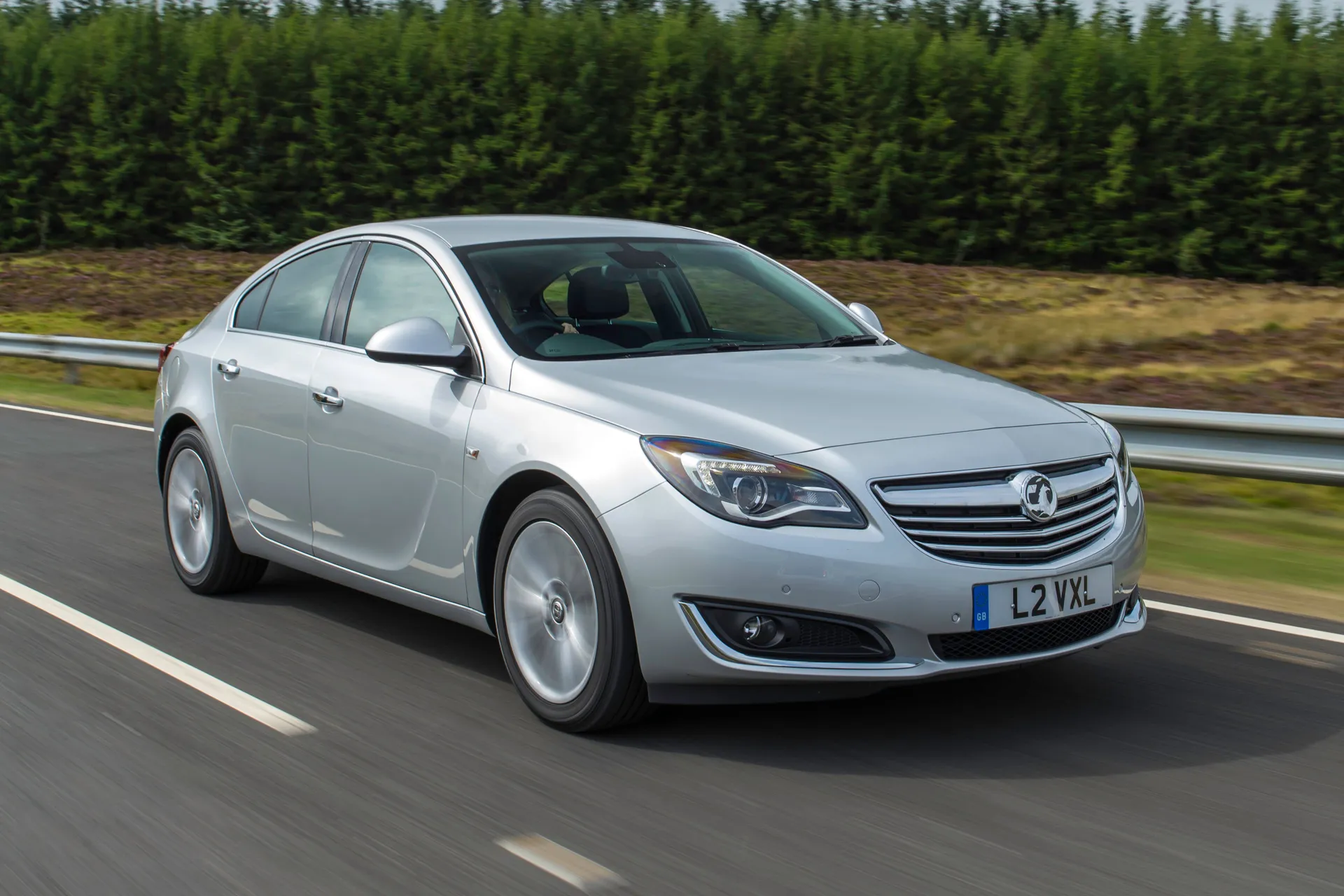
Most early 2.0 CDTi models have Nasa-rocket mileage, but these can be had for as little as £500 although we would recommend stretching a bit for a newer model.
A newer, more aggressive-looking Insignia with a 1.6 or 1.5 turbo diesel can be had for under £6,000. The mileage will be relatively close to 100,000 miles. Spending around £9,000-9,500 gets you a sub-50,000-mile 2020 car.
Trim levels and standard equipment
The Insignia model range was broad, with Exclusiv and ES at the lower end, moving through SRi to Elite at the top. In addition, there was the sporty SRi VX-Line and the all-singing Elite Nav.
Post-facelift models included a Tech Line, which had everything any self-respecting company car driver could've wished for, plus a smart-looking Design version that ended up being one of the better sellers. Vauxhall then started filling in the gaps with versions such as Energy, which had a bit more kit than SE, but not as much style as Design.
We told you it was confusing. Did we mention there was also a Limited Edition that was anything but limited? Thought not.
Ask the heycar experts: common questions
What was the fastest Vauxhall Insignia?
What was the most efficient Vauxhall Insignia?
Do Vauxhall still make the Insignia?
Get our latest advice, news and offers
Keep me updated by email with the latest advice, news and offers from heycar.
By submitting you agree to our privacy policy
